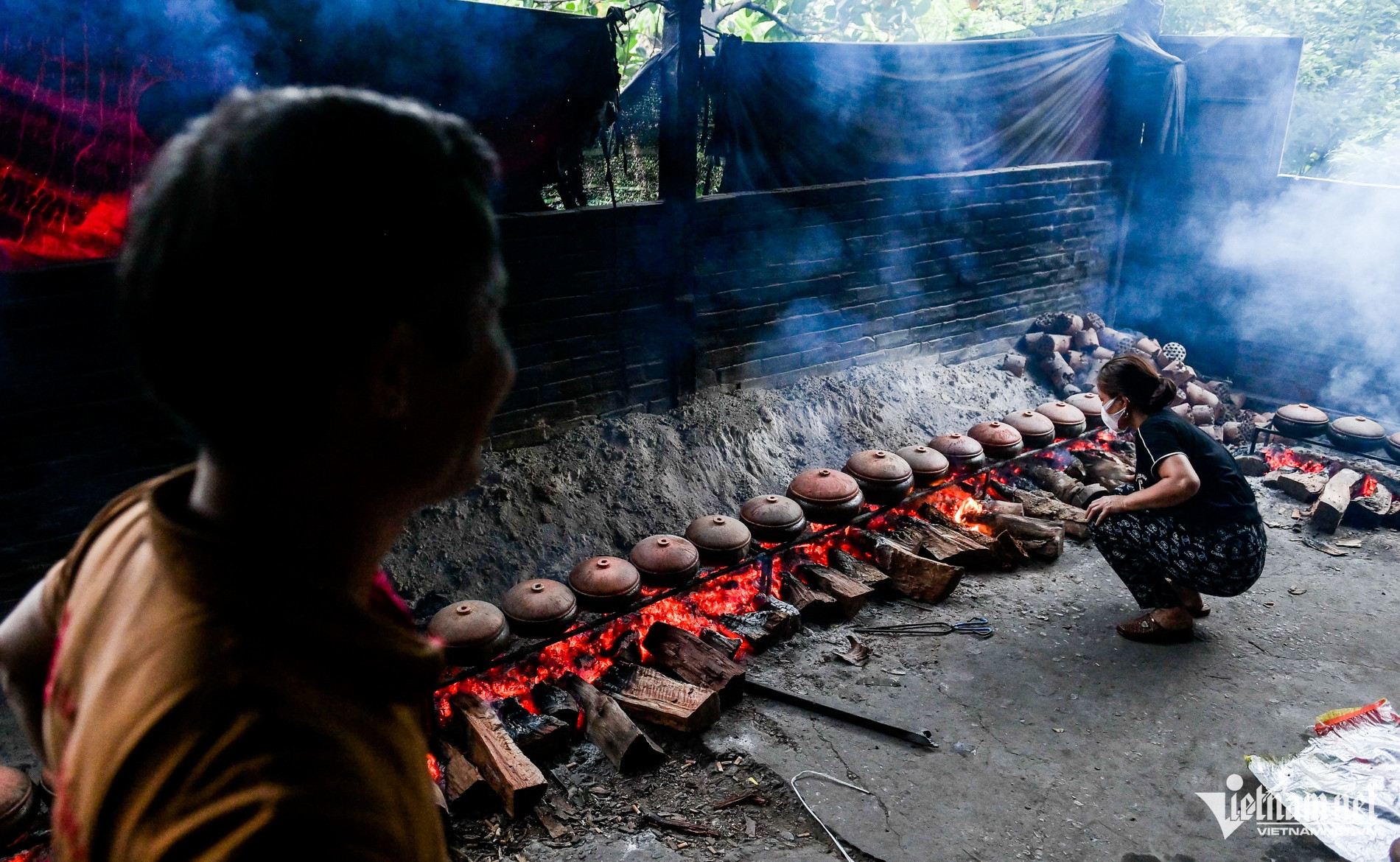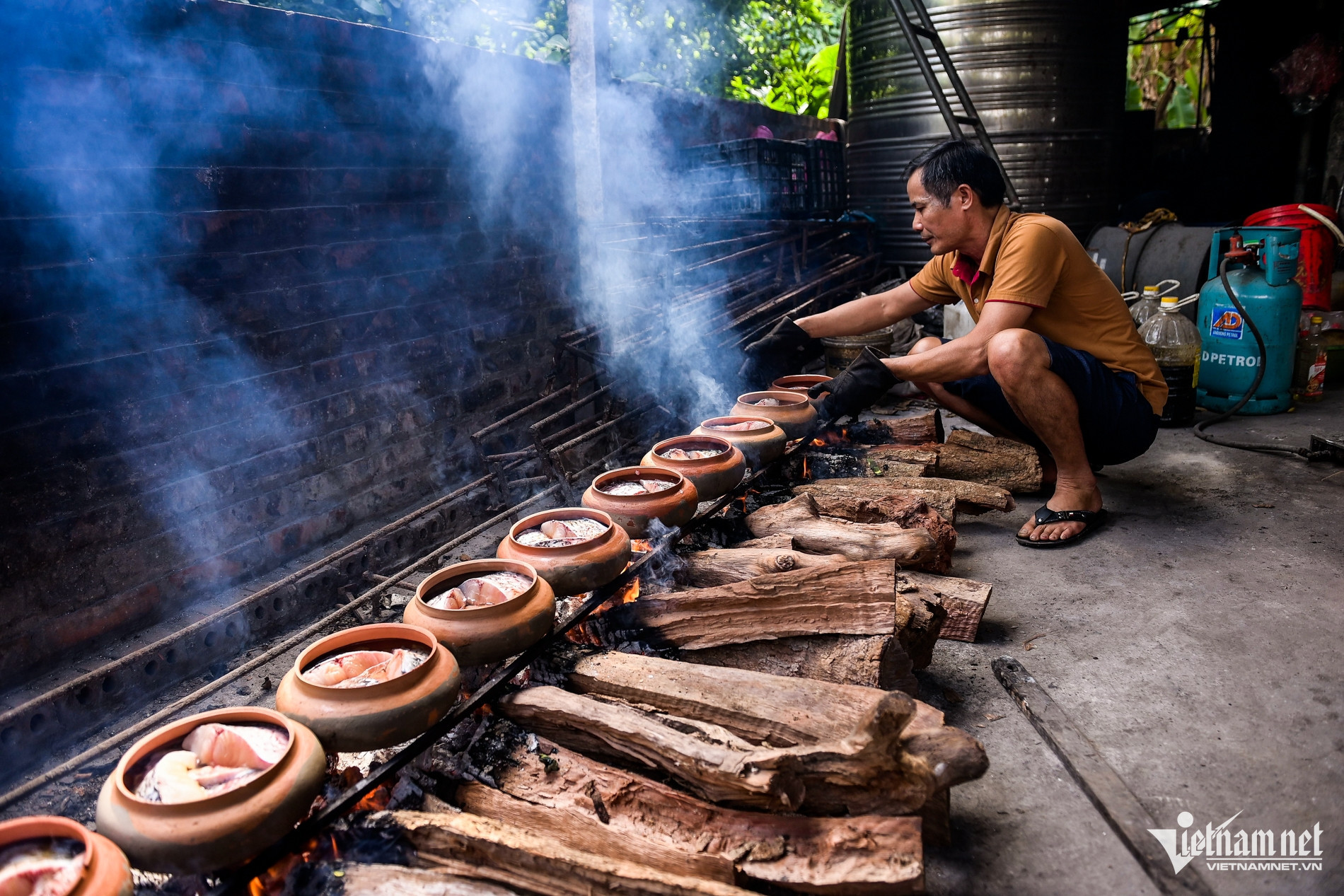Braised fish is a humble dish, cherished across generations in Vu Dai Village, now part of Hoa Hau Commune, Ly Nhan District, Ha Nam Province. The recipe has been preserved and passed down through generations, becoming a hallmark of the local culinary tradition.
Known as "Vu Dai Braised Fish" or "Dai Hoang Braised Fish," this dish is a celebrated specialty of the region.
Tran Duc Phong, 55, a resident of Hoa Hau Commune and owner of a long-established braised fish business, explained that in the past, locals traditionally braised fish with a salty flavor for family meals, making it a well-known skill among villagers. During his parents’ time, as living standards improved, demand grew, and they began selling the dish, primarily during the Lunar New Year holiday to neighbors.
“My parents started selling braised fish nearly 30 years ago, and I’ve been running my own business for almost 20 years. After so many years, I can tell whether the fish is seasoned correctly just by its aroma or how much water remains in the pot just by the sound of the simmering,” Phong shared.
Each family in the village has its unique recipe. However, despite variations, today’s braised fish pots are still prepared using the traditional methods passed down from earlier generations, Phong added.
Phong’s family produces thousands of braised fish pots annually, with the busiest period being the 10 days leading up to the Lunar New Year. During peak demand, orders can reach 400 pots a day. To meet the workload, he hires an additional 15 workers, divides them into two shifts, and braises fish continuously day and night.
These pots of braised fish not only sustain Phong's family but also spread the flavors of his hometown across Vietnam and even abroad.
The braising process follows traditional techniques, using ingredients like galangal, ginger, lime juice, onions, and chili. To achieve the perfect pot of braised fish, Phong’s family meticulously selects and prepares every component, from the main ingredient-black carp-to the fish sauce, firewood, and clay pots.
The art of crafting Vu Dai braised fish
The fish used is black carp, raised on a diet of snails for 2–3 years, with each fish weighing between 5 and 8 kilograms. The fish must be kept alive until preparation. This ensures the final dish has a firm, fragrant, and rich texture. Upon arrival, the fish are descaled, gutted, and their heads removed. The body is cut into uniform pieces, washed with saltwater to eliminate any fishy smell, and left to dry.
The clay pots used to braise the fish are sourced from Nghe An Province, while the lids come from Thanh Hoa Province-regions renowned for producing durable, heat-resistant clay. During preparation, slices of galangal are arranged at the bottom of the pot, followed by layers of fish. Fish sauce and seasoning are added, along with just enough water to cover the fish, before the pots are placed over firewood stoves.
Firewood from longan trees is preferred because it produces steady heat without emitting harmful smoke, ensuring the fish cooks evenly and remains free of smoky flavors.
After 30 minutes of simmering, additional ingredients such as caramel sauce (made from sugar), annatto oil, ground galangal, and chili are added. The pot is then covered and left to cook slowly over low heat.
A meticulous process
Braised fish might seem simple, but it is a labor-intensive process requiring constant attention. The dish must be simmered for 12–14 hours, with the fire and water levels carefully monitored. The smoky environment can be tough on the eyes, making this craft a test of endurance.
Phong revealed that his secret to eliminating the fishy smell includes adding lime juice. Additionally, as the liquid in the pot reduces, boiling water is frequently added to maintain moisture.
The hallmark of Vu Dai Braised Fish lies in its texture and flavor: the fish is tender enough to eat the bones, yet the flesh remains firm and intact. Its rich, aromatic flavor, enhanced by fresh ingredients and time-honored techniques, ensures the dish can be preserved for up to a week without spoiling.
According to local authorities in Hoa Hau Commune, the braised fish industry has seen remarkable growth in recent years, becoming a primary source of income for many families. Currently, over 40 households in the commune braise fish year-round, with the number rising to more than 100 during the Lunar New Year season.
The price for Vu Dai Braised Fish ranges from VND 600,000 to VND 2,000,000 per pot. Most businesses now utilize vacuum-sealing technology to prevent mold and bacteria, helping the product maintain its flavor and shelf life.


 |
 |
 |

The wood used must be from longan trees, as this type of wood burns into embers without producing harmful smoke and maintains stable heat throughout the braising process. This ensures the fish cooks evenly without being tainted by smoke.
 |
 |



Trong Tung